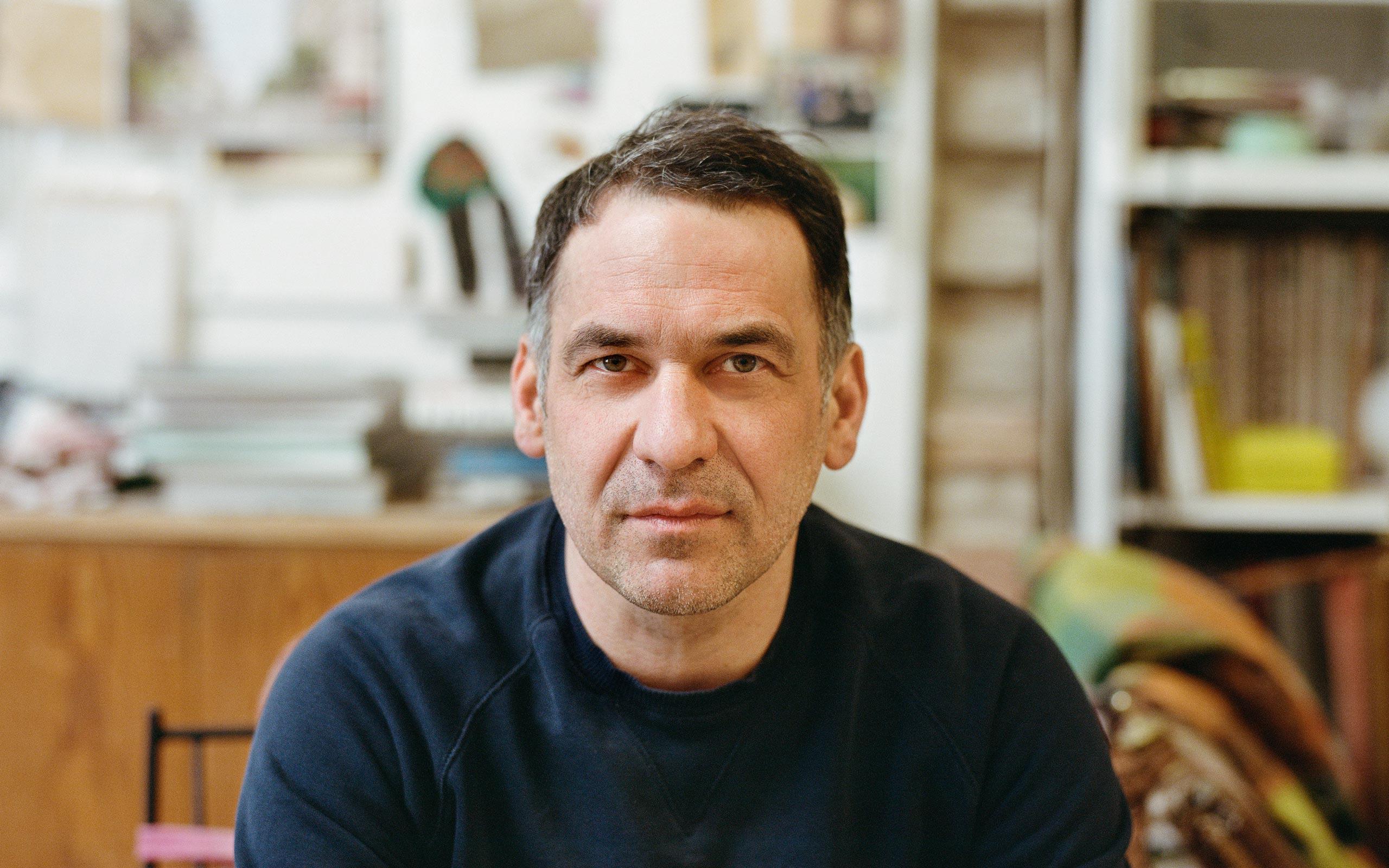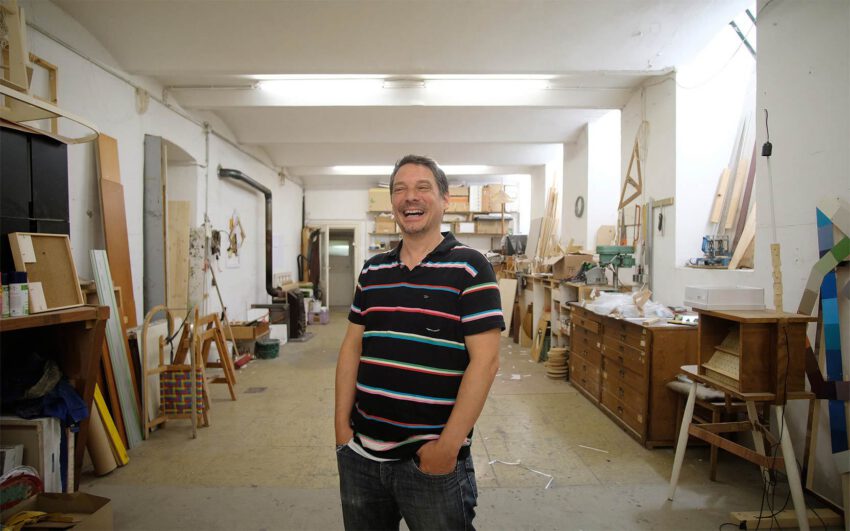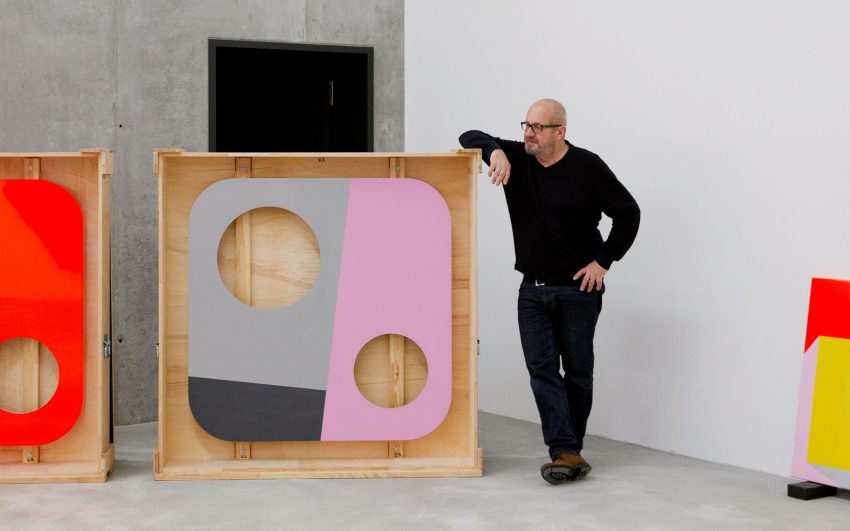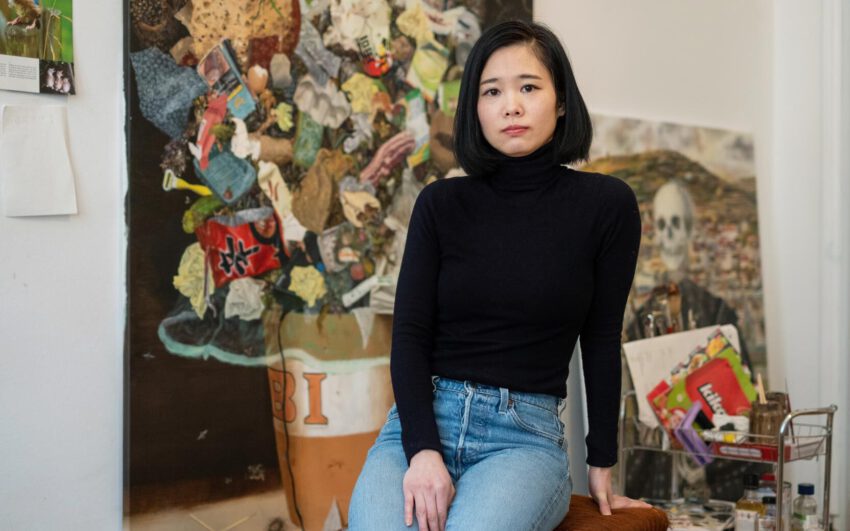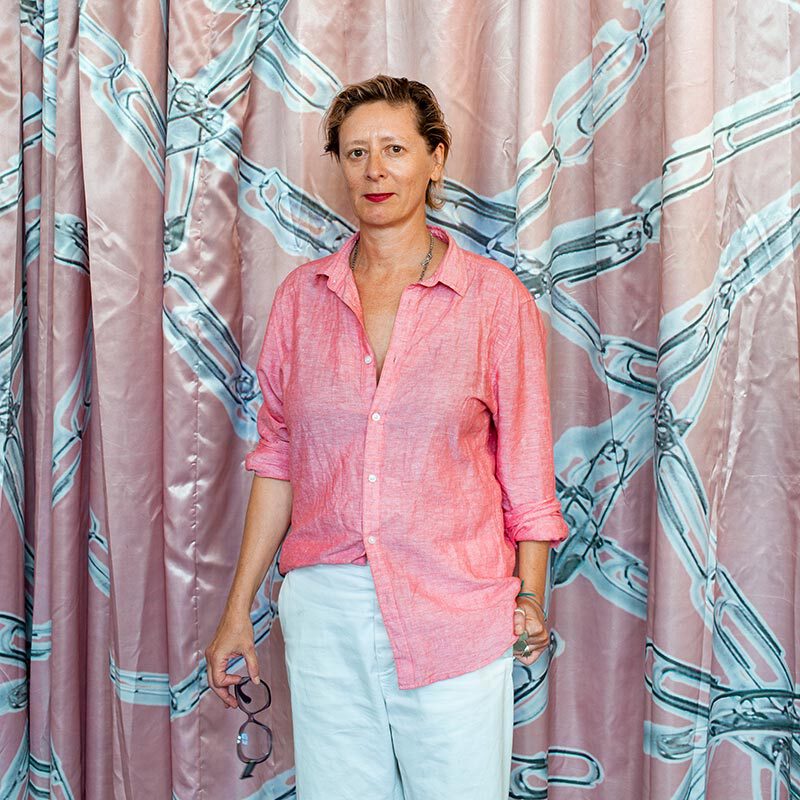Between empty kiosks, children’s playground climbing frames, and abandoned buildings made from precast slabs — Christian Thoelke focuses on the division of society. As a student at the Weissensee Art Academy, he experienced firsthand the upheavals and transformations of the reunification and transformation of Berlin. He reflects this experience in representational paintings.
Christian, in your recently concluded exhibition Heartland at the Ahrenshoop Art Museum, you showed abandoned landscapes and places in large-format paintings. How did the English title Heartland come about?
There are several levels to this title that are significant to me. On the one hand, Heartland is a term in its own right that refers to the rural heartland of America or the former industrial regions that were the engine of the U.S. economy for many decades and are now increasingly losing importance in the course of globalization. This development exists here in Europe too and when people speak about a divided society, they are referring to the conflict between the cosmopolitan cities and the periphery, which is affected by structural change. At the same time, Heartland also expresses a special relationship to a place or to a home. In my case, my East German socialization adds to this since East Germany is very strongly affected by phenomena such as deindustrialization and demographic change. This development touches me very emotionally and therefore I try to work through this in my paintings.
You actually come from figurative painting, but in these pictures, figures appear only marginally, if at all, and you have rather shown abandoned architecture and interiors. What’s that all about?
Once again, we are living in times of great social upheaval, the dimensions of which cannot yet be foreseen against the backdrop of climate change and the current events in Ukraine. The pandemic has already shown us how fragile our model of coexistence is, tending to focus on the individual. But it is quite clear that we can overcome such crises only as a society based on solidarity. In this respect, I see the decaying modern architecture and interiors, from which man has withdrawn and which have become overgrown by nature, as an expression of a kind of upheaval that the people of eastern Germany have already experienced and this is now, figuratively speaking, about to happen again or is already in full swing. After all, this development goes hand in hand with the structural change that is also taking place in parts of western Germany, as in the entire world. What does it do to a place that has lost its original purpose, and what does that say about our society? In this sense, it is precisely this absence of people that is the subject of these pictures, for it is the expression of a world that has perished and reinvented itself.
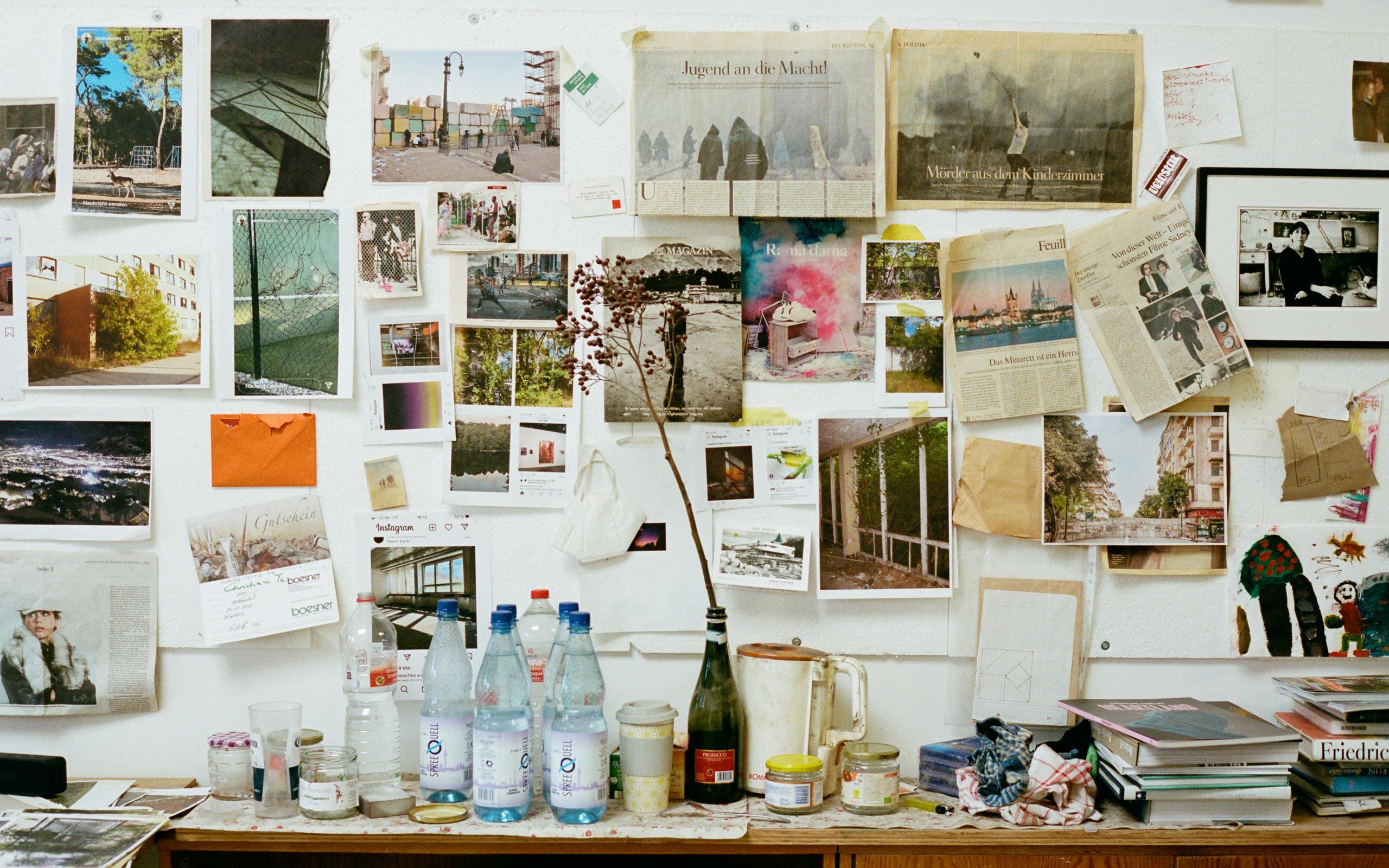
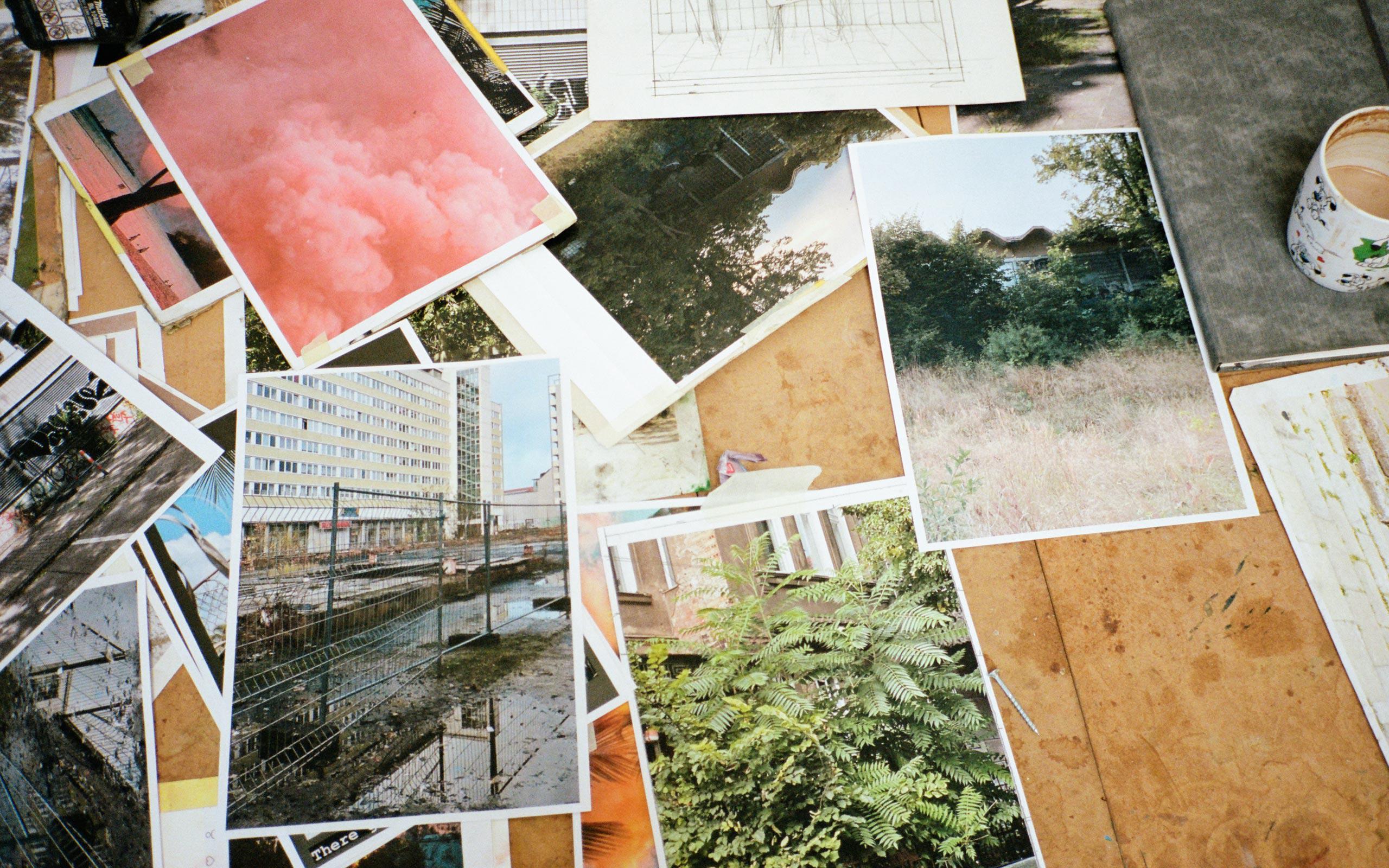
Why does the transformation of spaces play such an important role in your work?
My interest in this is naturally rooted in experiences of the post-reunification period in East-Berlin at the beginning of the 1990s, which was characterized by massive transformation processes, and which also manifested itself not only in changes in the immediate living environment, but also in the cityscape in general. Stores, businesses, and industrial plants that had just barely been functioning and were abandoned more or less overnight suddenly became a common sight. I was sixteen years old at the time of the reunification and fully immersed in this time of upheaval and saw along with my parents and their friends how radically everything had changed for both their and my generation. The end of the former GDR also meant that many people had to start from scratch. I felt everywhere how much everything around me was changing. And then, of course, there were all these socio-economic injustices – the property relations, the housing problems, the extreme level of unemployment, the structural changes. I come from a rather middle-class household, and for my family this transition turned out relatively smoothly. But many people who became unemployed had to reorient themselves. And dealing with that also shaped and sensitized me.
How did you feel about your adolescence during this time of upheaval?
At age sixteen, you are actually finished, adolescence in its first stage is complete. You’re shaped more than you realize, complete. Many things, how they work and what you have to do to achieve goals, are actually formed in you then. In addition, I hardly had to go through many negative experiences in the former GDR because I was too young, but it was absolutely clear that things would have become increasingly difficult for me in subsequent years; if I had to join the army for example, I probably would have seen many things differently. I have artist friends who are only a few years older than me, whose experiences caused them to be much more critical of the former GDR for such reasons. For me, everything actually went well in the years of growing up. I was in the right place at the right time. The fall of the Wall opened up an incredible number of doors.
How did you come to art in your youth and why did you finally apply to the Weißensee School of Art?
That was a completely normal process for me because I come from a family of artists. My mother is a porcelain designer. She studied ceramics in Weißensee and then worked successfully in the former GDR as a freelance designer and for industry. I always admired her work very much, so the access to art was completely normal for me. She drew a lot with me and taught me methods. And then there were these painting circles in the former GDR, where artists taught children how to paint and draw, and I took part in these as well. In this respect, it would have been unusual if I had not continued from there. Because of my parents, I had a huge advantage over people who always had to justify their free artistic activity and had pressure from their parents. On the other hand, it was never a conscious decision.
How did this reunited city affect you, and was Berlin an important source of inspiration?
Of course. If, like me, you come from a regimented youth, in the sense that there were few places where you could develop completely freely, where you could do something in a self-organized way, then suddenly, it was completely crazy – anarchy. We opened a kind of youth club in Pankow and managed it ourselves. We organized all kinds of things there, from parties to movie nights. At the same time, we were in the midst of club culture, where new places were opening and closing all the time. I was on the road a lot and that still shapes and inspires me today. This drifting through the night and partying until the morning and then standing at the bus stop and actually not knowing where you were when you came out of the club, that was a great time.
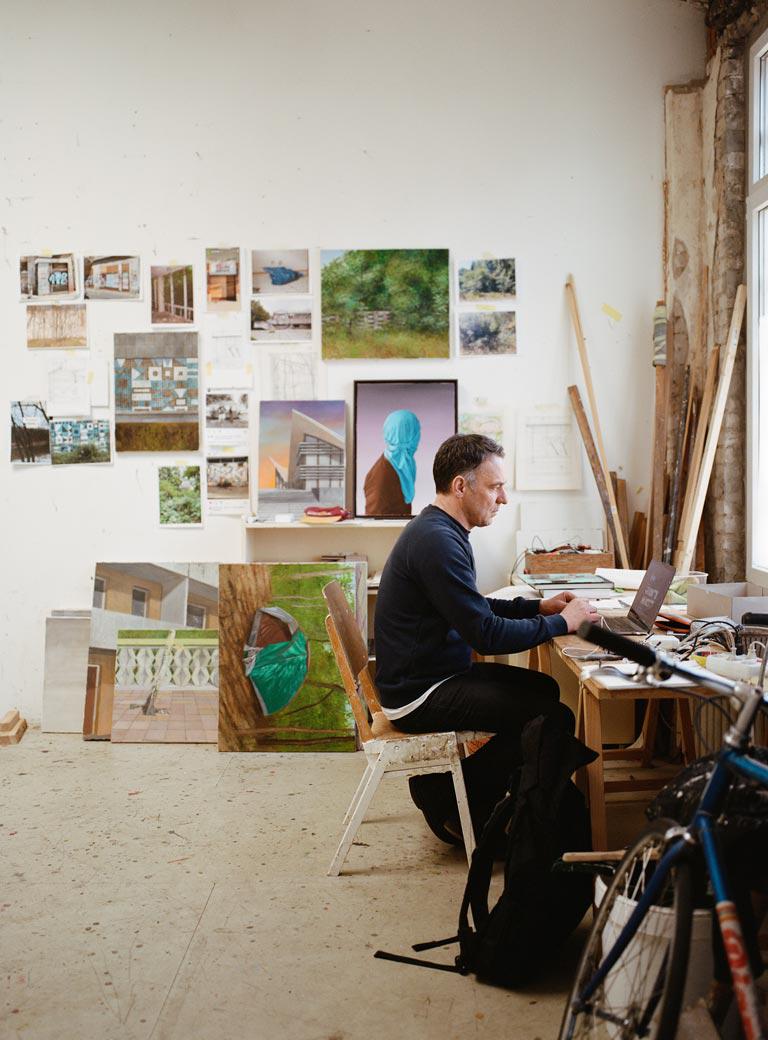
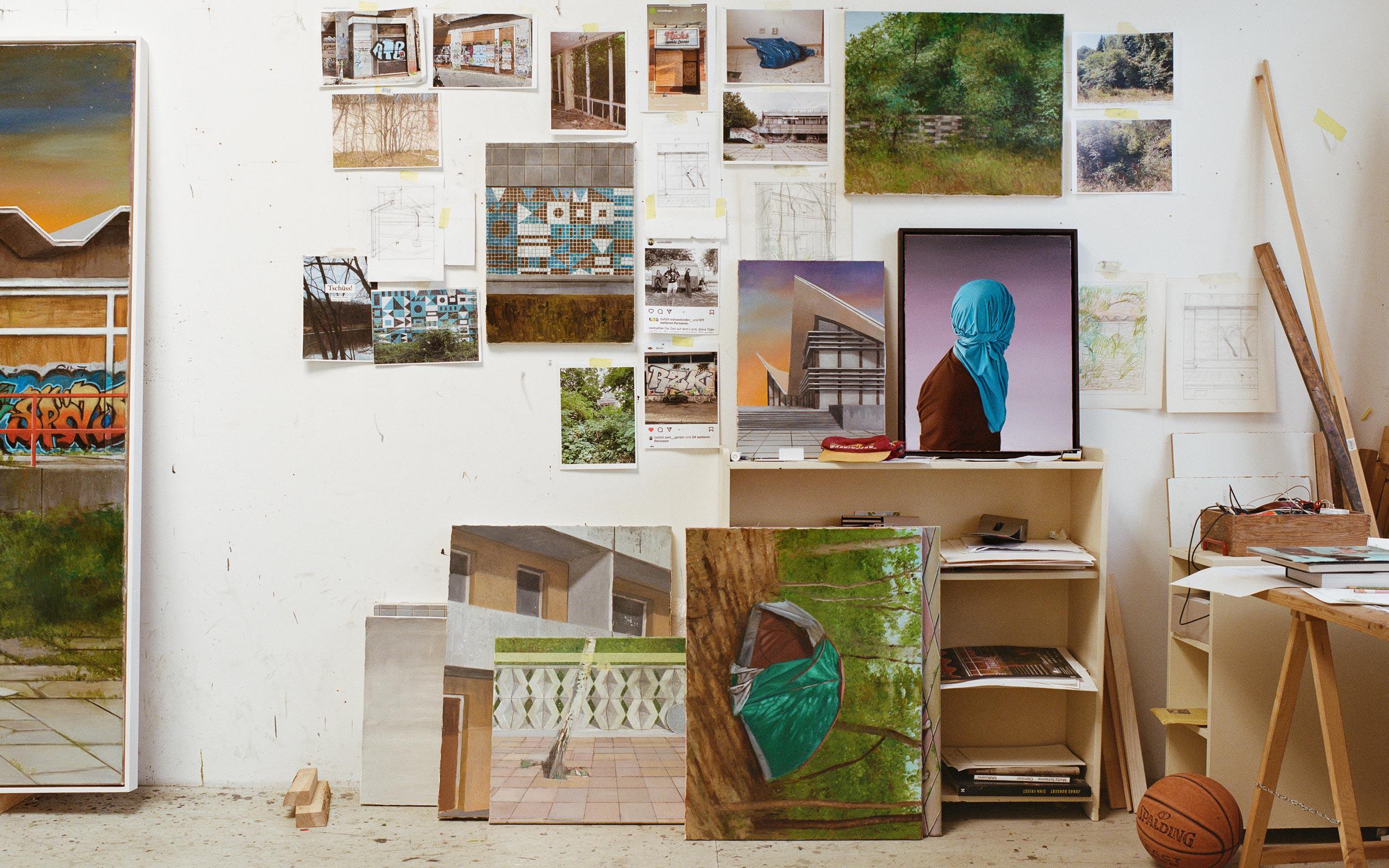
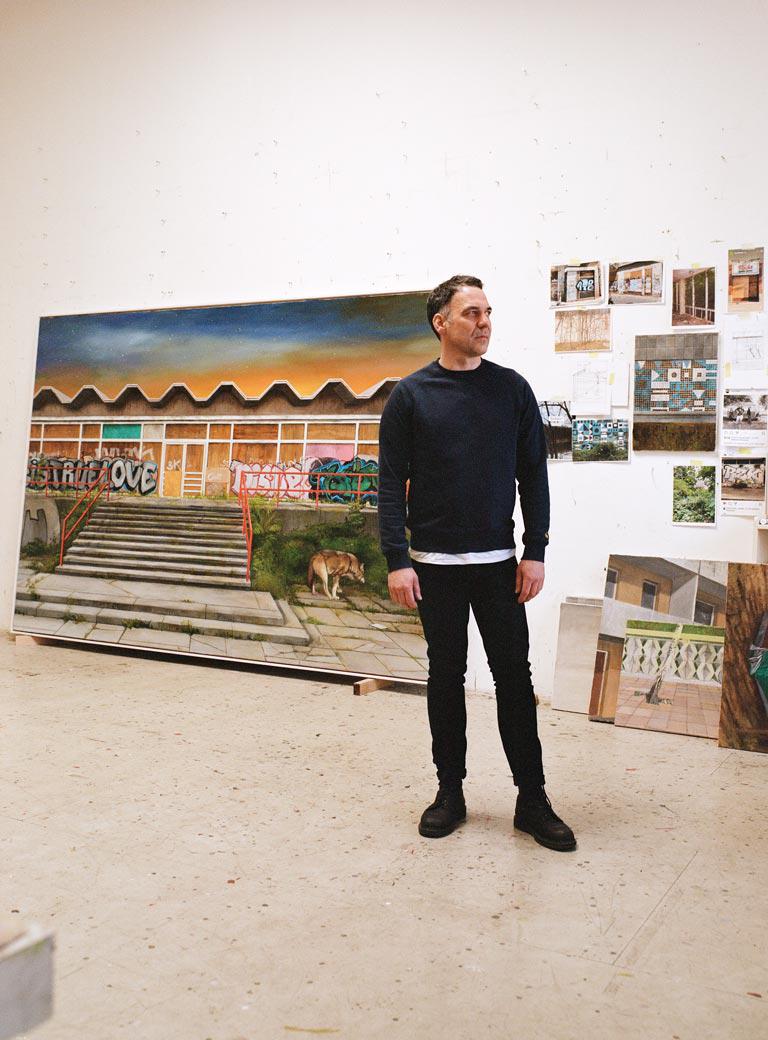
What was the first formative exhibition for you?
I’ve always exhibited relatively little, which has to do with the fact that my work doesn’t function that easily in a private or commercial setting. The pieces are not necessarily pleasing, and you might not want to have them around every day. But I couldn’t and didn’t want to make any compromises at that point, and I preferred to still work in film or trade fair construction on the side, if that was necessary. I always thought that my painting was more suited to an institutional context, and so I was very pleased that the exhibition at the Kunstmuseum Ahrenshoop has now come about, this is the realization of something I had always wished for – a large and well-embedded presentation in a museum.
What does the term art mean to you personally?
I don’t really relate to this term very much. I think everyone has to do what they like to do or what keeps them busy. And there are people who simply want to express themselves, but that is not a way that has ever been of interest to me. For me, painting is a medium by which to navigate and reflect on the things that occupy me. Personally, I’ve always been interested in content-driven painting – Otto Dix was an inspiring artist in my student days, or the other painters of the New Subjectivity.
How do the images come about in concrete terms?
I usually carry an idea for a picture around with me for a long time. Many ideas I discard after a while, but if there remains something good, I make some loose drawings to see how I might solve it compositionally. In the end, I actually already have a pretty concrete idea of what the picture should look like. However, this usually changes quite a bit, and the finished picture often looks quite different to what I first thought. I then start to look on the Internet for similar, more suitable photos or make them myself, which bring out more of what I’m interested in concretely. Usually, it is about details of a larger composition, which I combine as in a collage with invented elements on the canvas.
When is a painting finished?
My way of painting is quite concrete. Of course, one could say that the picture is finished when everything is worked out to the end. But that would seem extremely boring, I think. From the beginning, I try to keep the picture under tension and do not treat everything the same, i.e., to leave some parts more open than others and to focus on individual sections. I am satisfied when I come into the studio in the morning and see that everything is okay, there is nothing more to do. It works.
A picture works: What does that mean?
For me, the level of content plays a big role. One has to be able to see it. Because that’s the challenge in representational painting: it must not become too clear, too striking. That can quickly become embarrassing and boring. The work must allow for several interpretations.
Were there any personalities in your student days who influenced you and your work?
Yes, definitely. My professor in Berlin – Wolfgang Peuker, who was one of the most important protagonists of the “Leipzig School” in the 1970s and 1980s, who worked originally in Leipzig and then came to Weißensee in 1988/89. He influenced me because he created pictures that spoke to the circumstances. He simply had an uncanny power and conveyed to me like no one else what painting can actually be – that you have to get it out of the ivory tower and take it to the street. Art has to be on the street
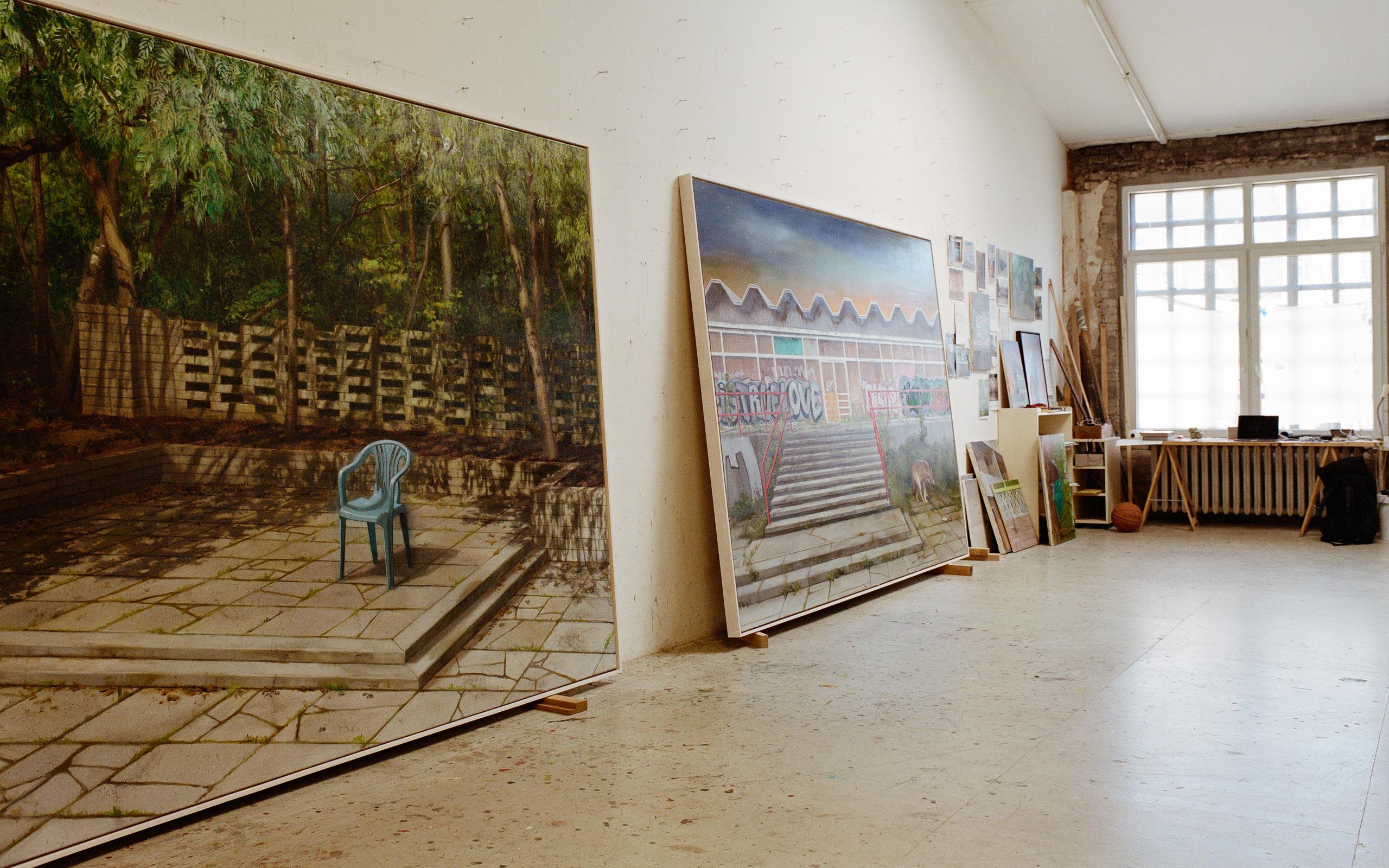
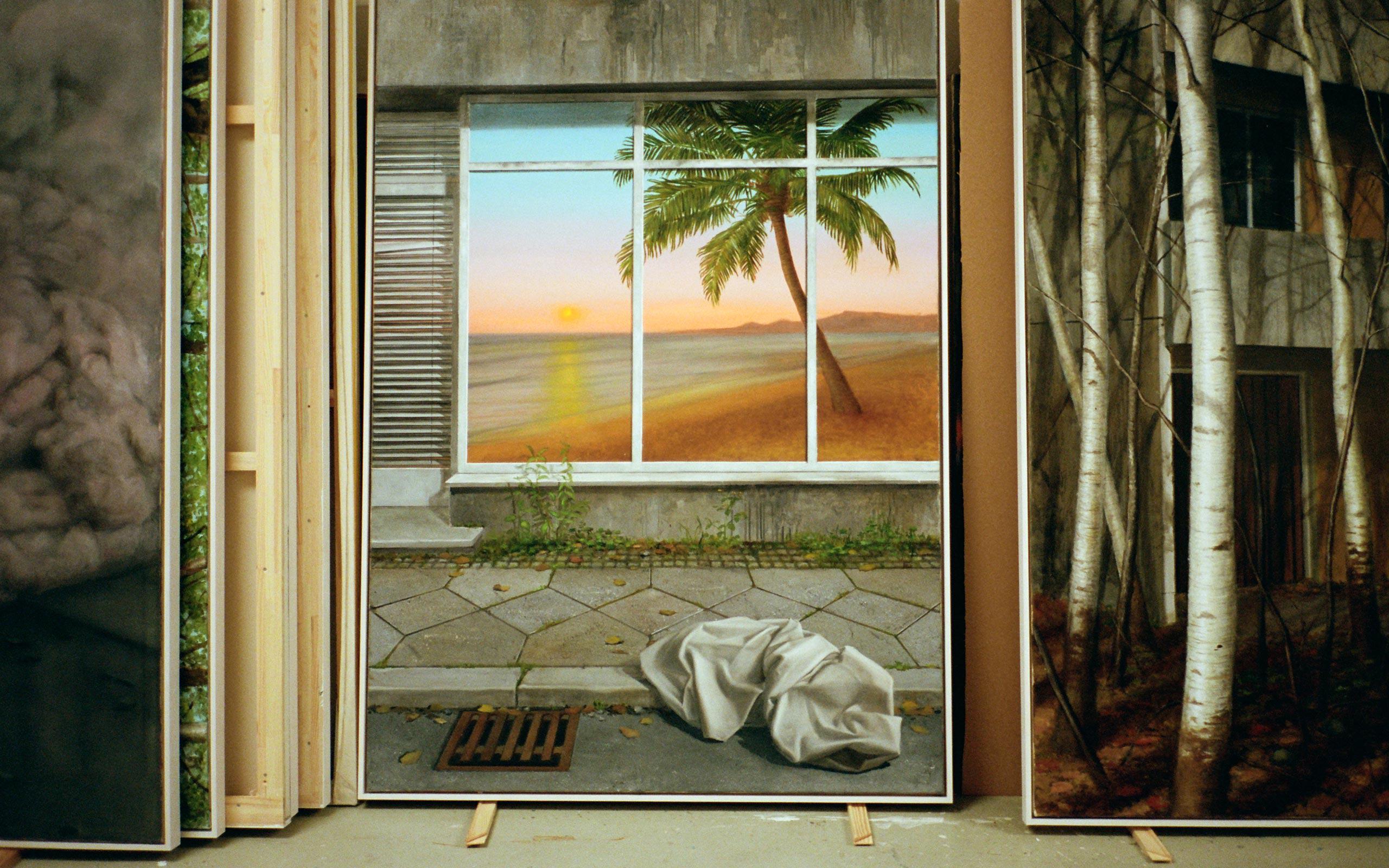
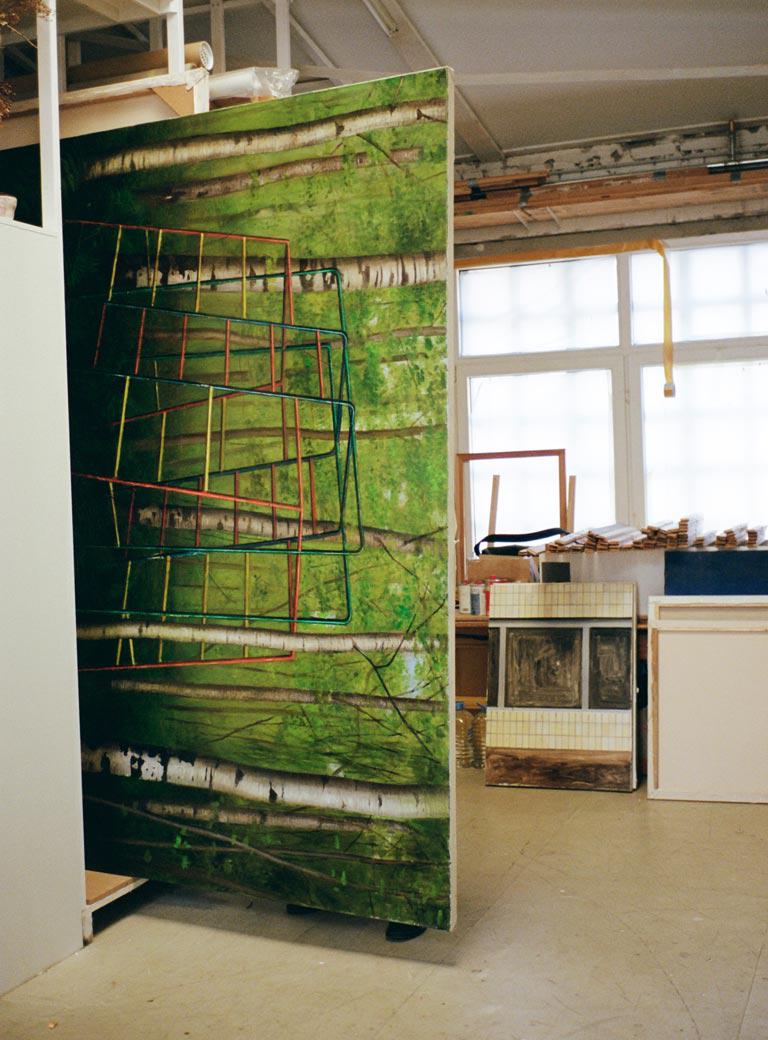
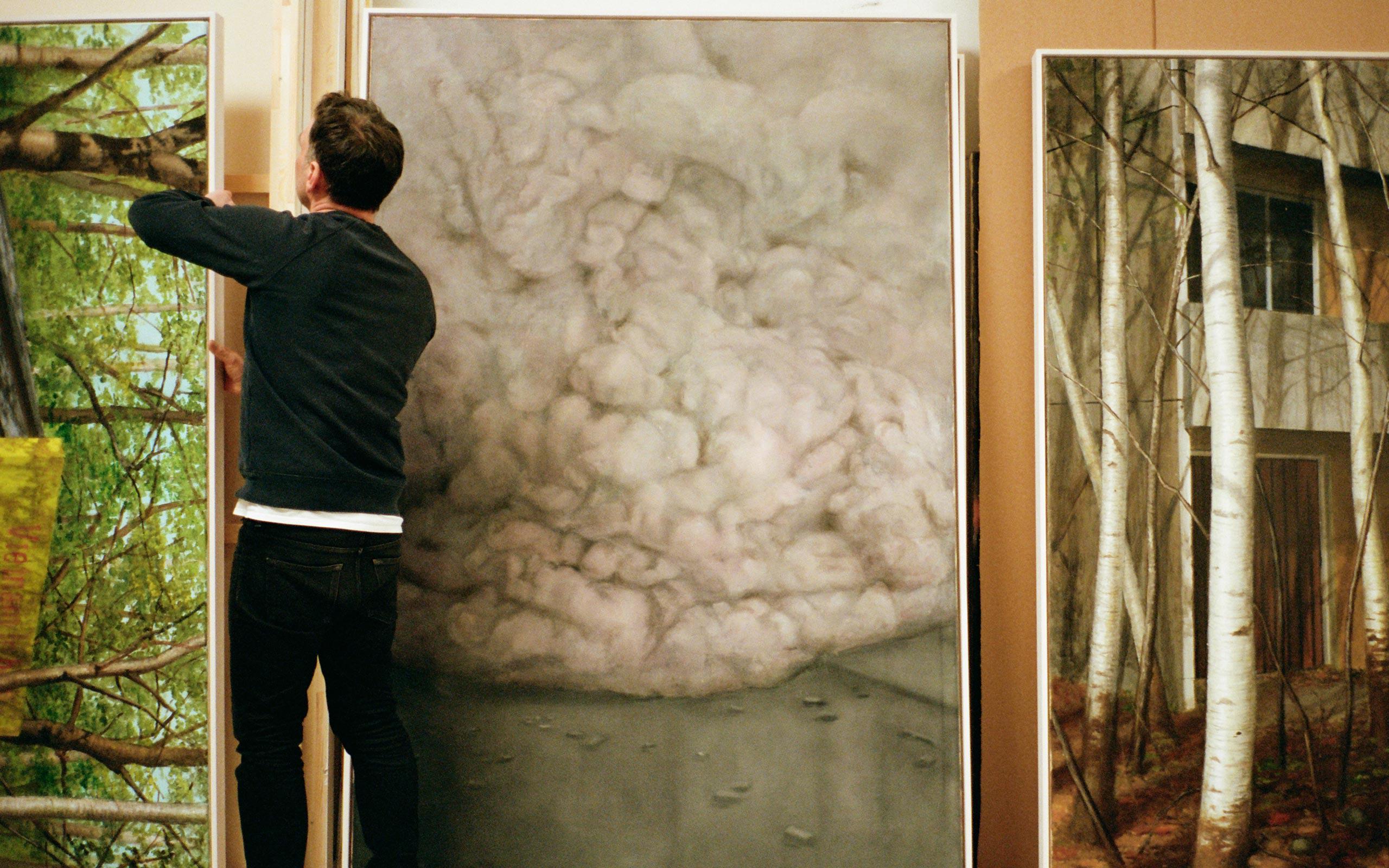
Construction and architecture play an important role in your work. Why do you focus on that so much?
It’s all about form for me. In classical painting, you develop a stage set on which everything takes place, figures appear, and things happen. And that's how I compose my paintings, too. I sketch beforehand and then make a technical drawing with vanishing points. I make sure that the space works in its perspective and then transfer that to the canvas. In this way I create a depth in the picture and a space that can then be played with. In the case of my current work, however, this goes further. Here, I show an architecture that has accompanied me all my life. In the former GDR, the focus of urban development was clearly on new construction and less on the preservation of old buildings. Accordingly, the architecture was extremely future-oriented in its ideological aspirations and was intended to be an expression of a new, better world. Such iconic forms as the folded roof, which was used for many sports, swimming and shopping halls, appear very futuristic in their character. When such urban spaces are then abandoned, the break is of course extreme, because these architectures were actually intended for the future, and now they are falling apart. That in itself is a sign that something has been destroyed here, that something has happened that has interrupted the normal flow of time. A completely different idea of society has overgrown, and these buildings are the witnesses of this process of forgetting.
One of your works shows a playground climbing frame. Another shows an abandoned kiosk. What’s it all about?
As with the architecture, these climbing frames existed everywhere in the former GDR. Many have survived the “Wende” but are no longer needed due to migration and are overgrown and broken. This condition is also an anomaly, because normally there is nothing more future-oriented than a children’s playground. This is an insane dialectic. The kiosk refers to the new business models after the fall of the Wall. There were many East Germans who went into self-employment because nothing else was possible. Temporary snack stands or stalls opened up everywhere. People sold anything to get by. At the same time, many of the former Vietnamese contract workers were looking for a future in these snack bars. But many of these stores did not work for long and were abandoned and rotted away. They are the symbols of the social hardships of economic change in East Germany.
Do you think that East German contemporary art is increasingly reflecting the problems of the East?
At least it’s been generating more attention for quite some time now. A few years ago, no one was really interested in in East-German art, it was too unwieldy. But now I notice that there is a new sensibility for the conditions in the East, you notice it in many things, for example that museums like the MINSK in Potsdam are completely dedicated to the art of the former GDR and are constantly opening new exhibitions on East German art. Finally, these themes of change and its consequences are gaining more attention, which may be due to the fact that decision-making positions are now being shaped by people who have been socialized in the East or who have a more unprejudiced view of East German art.
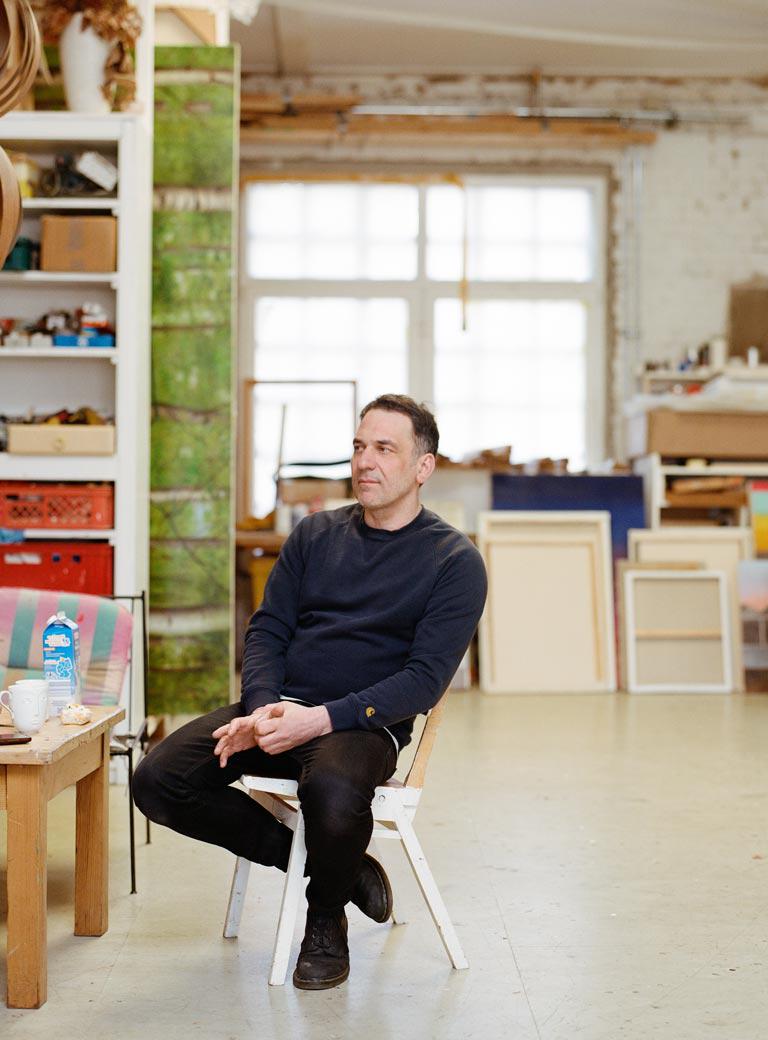
What are your current projects?
I have a few picture ideas on this subject, which I would still like to realize and then I’ll see how it will continue. Maybe by that time it has also been exhausted and I will do something else. In June 2023, the group exhibition Work Instead of Collection at Kunsthaus Minsk in Potsdam will open, where I am represented with two large works. Of course, I’m very much looking forward to that, especially since Kunsthaus Minsk is quite a spectacular building representing East Modernism. The exhibition there will show paintings from the Hasso Plattner Collection with a focus on art of the former GDR and will relate them to new works by artists with an East German background as well as to works by great West German artists such as Martin Kippenberger and Rosemarie Trockel. I am very curious to see how that will turn out. In addition, Potsdam is certainly a place where the East-West discussion is very much alive.
And do you think that the artistic confrontation with the rupture in society has an effect?
First of all, dealing with it is a form of acceptance and a gesture of respect. In many conversations I’ve noticed that people are enormously grateful that someone is focusing on these issues, because it’s also an artistic engagement with them. During the Heartland exhibition, people approached me because they hardly see themselves in what usually takes place in the art world. Painting things is a first step. More you cannot really do as an artist. I do not want to agitate, because I too have no solution. I just want to initiate a discussion with my work and in the best-case scenario. It is precisely in places of structural change and transformation that such an approach is needed – whether in Lusatia or in the Ruhr region.
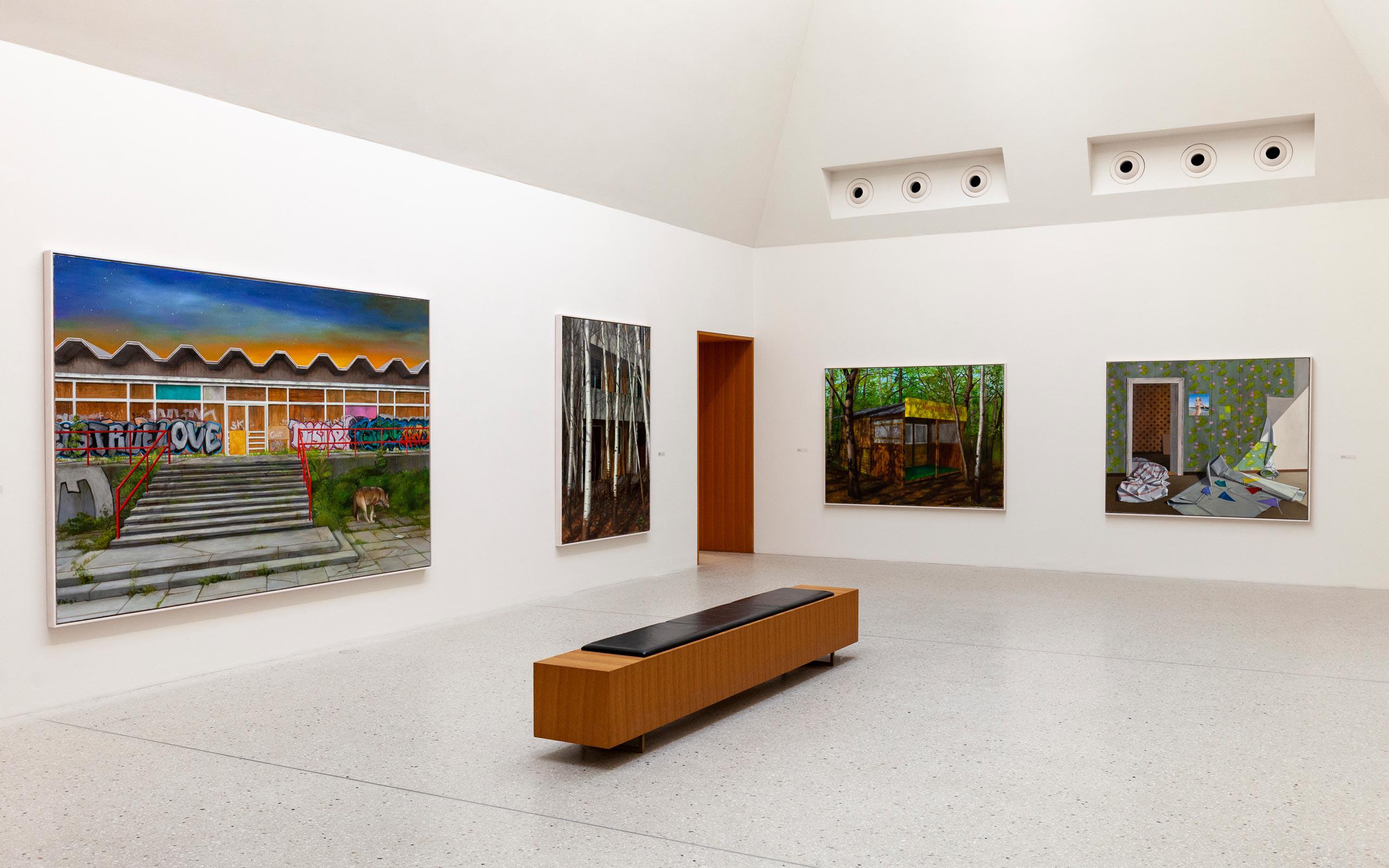
(c) Sven Potschien
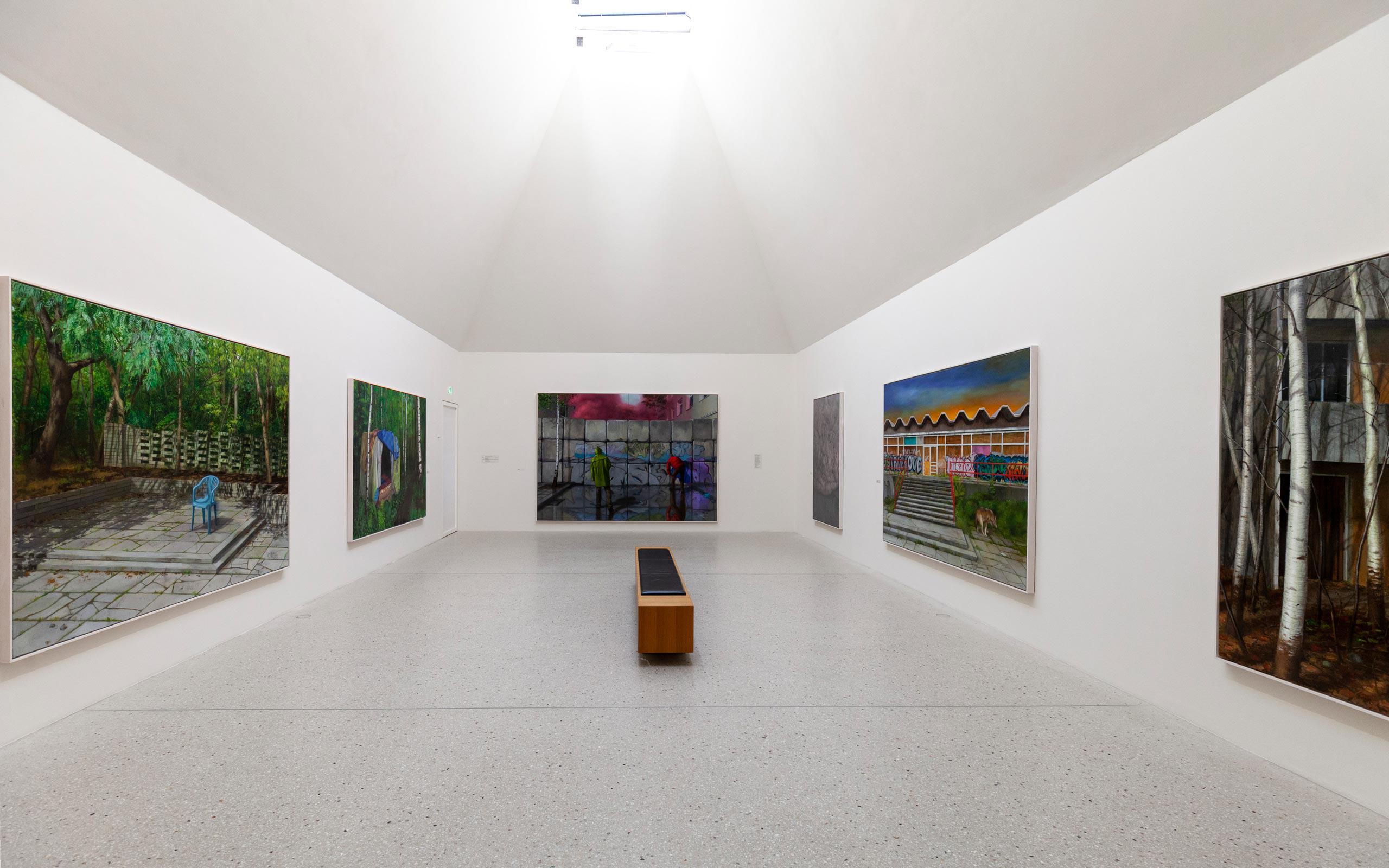
(c) Sven Potschien
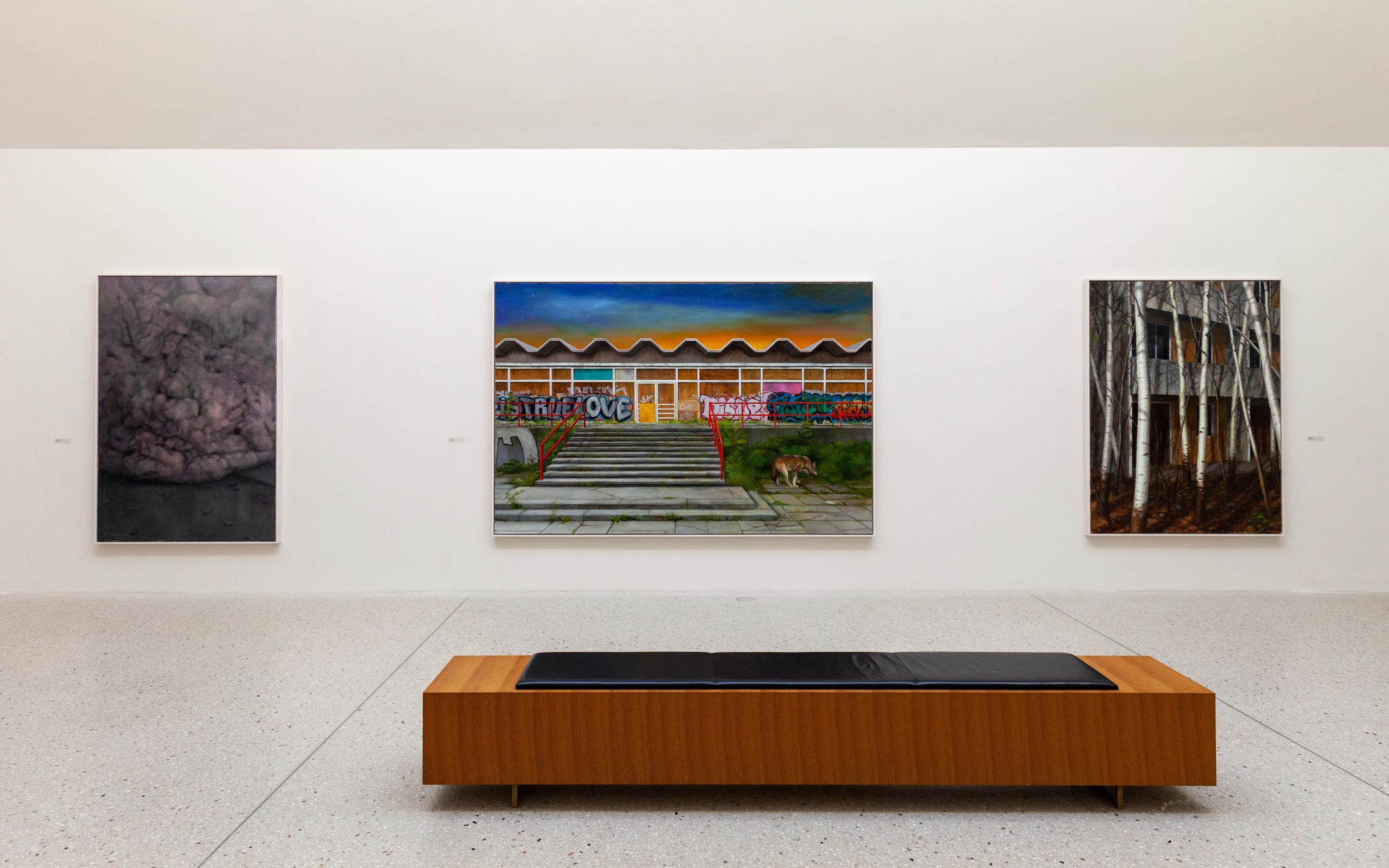
(c) Sven Potschien
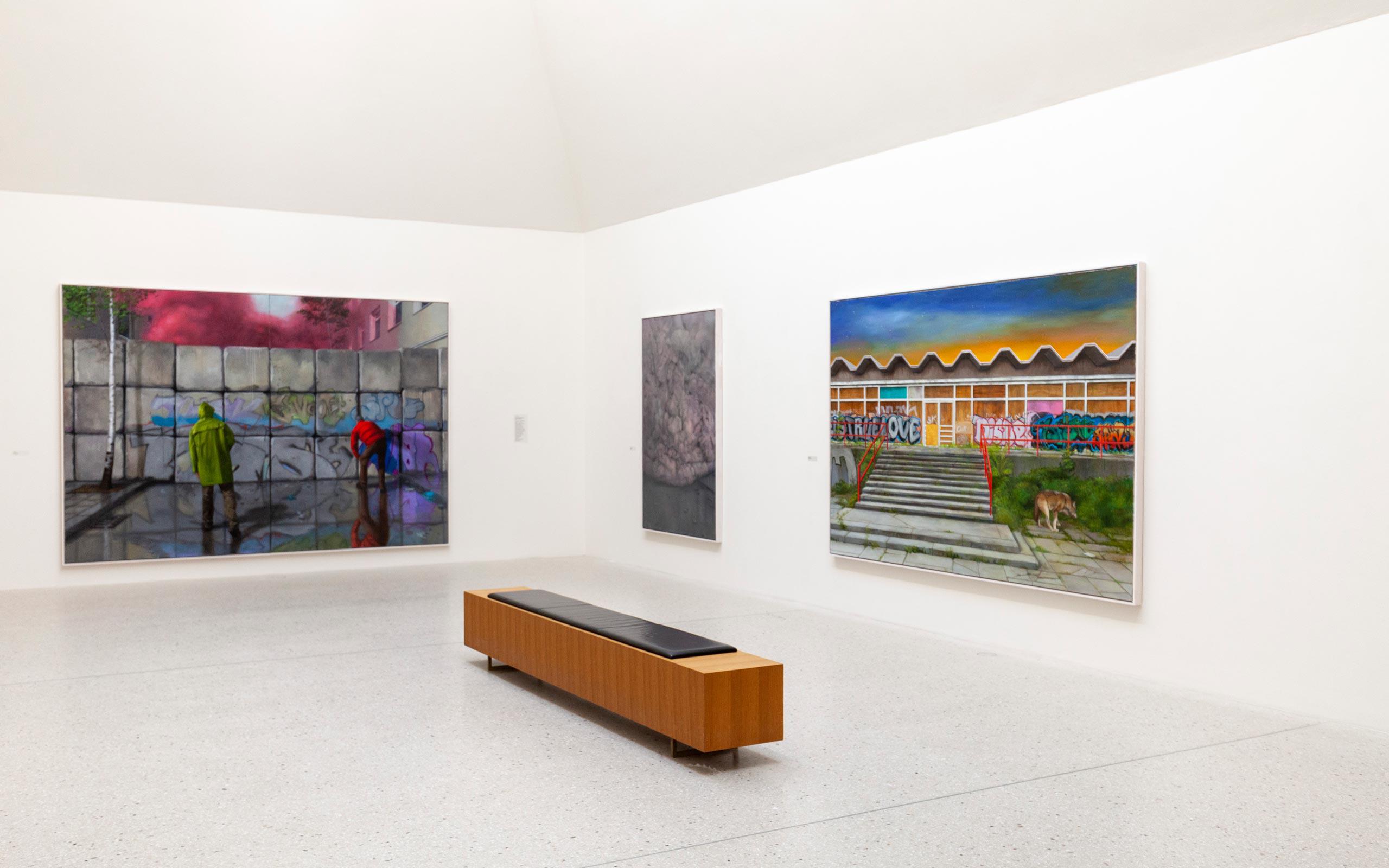
(c) Sven Potschien
Christian Thoelke – Heartland, Kunstmuseum Ahrenshoop, Verlag für moderne Kunst, 2022, with Texts from Katrin Arrieta, Charly Hübner, Kito Nedo and Daniel Richter
Interview: Kevin Hanschke
Photos: Sabrina Weniger


